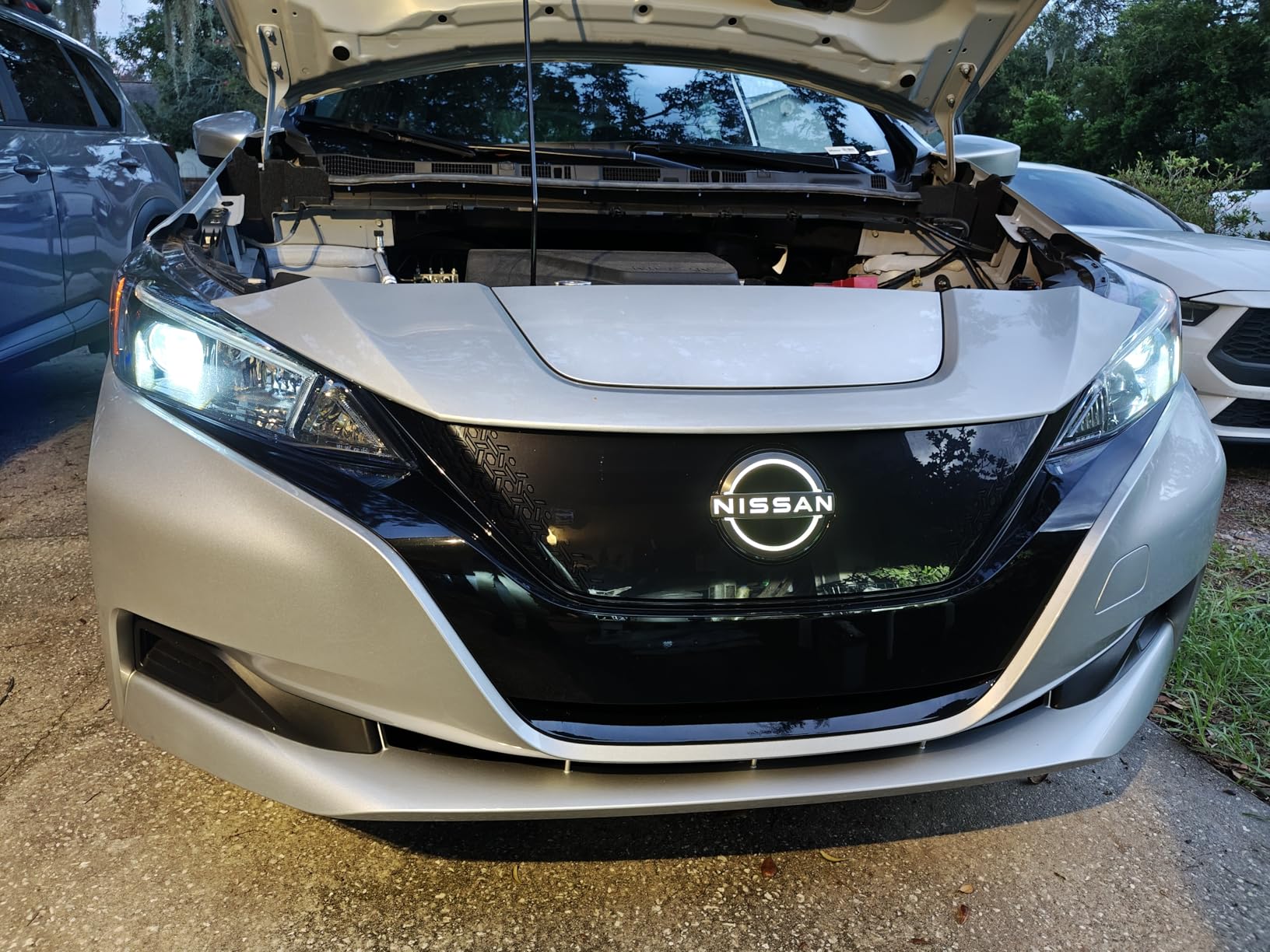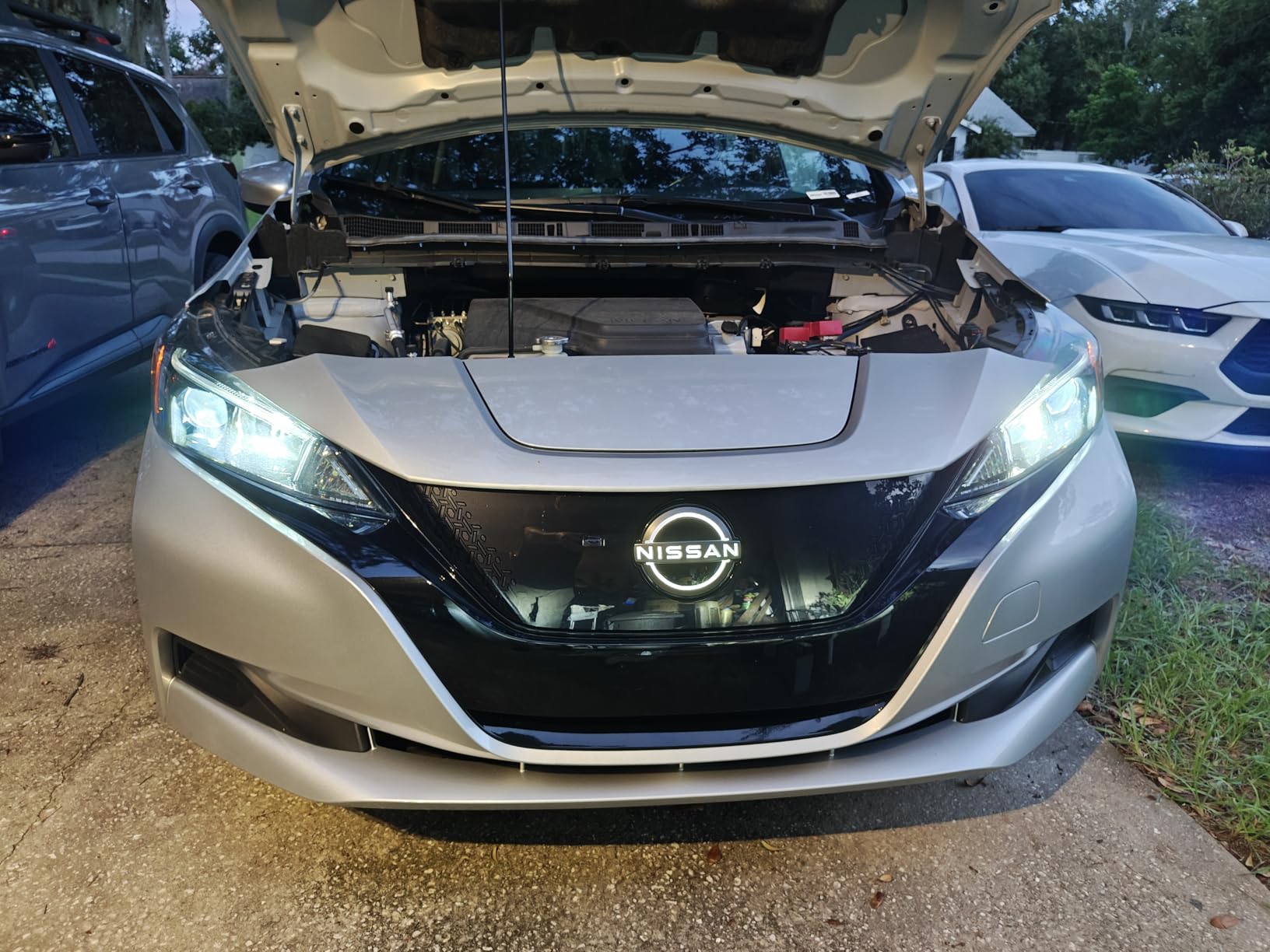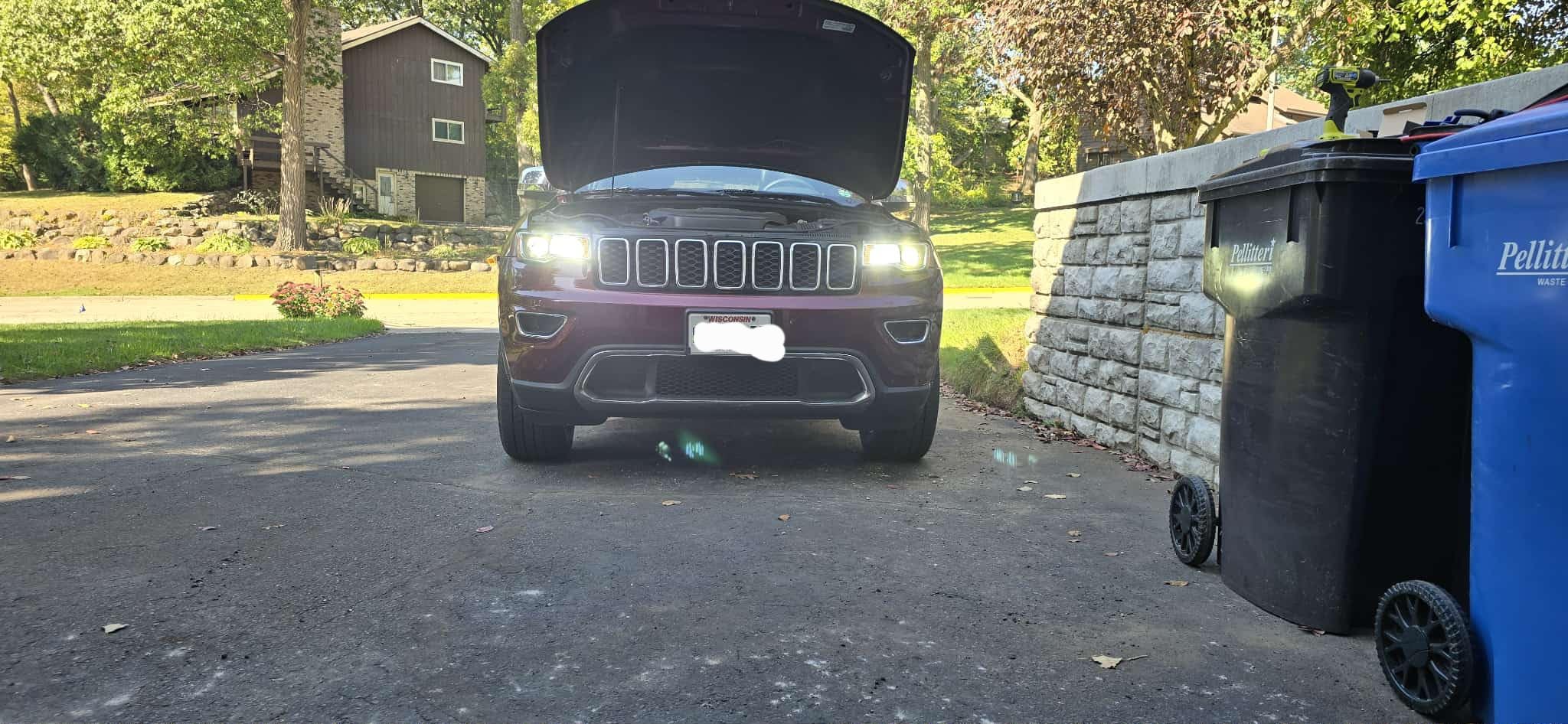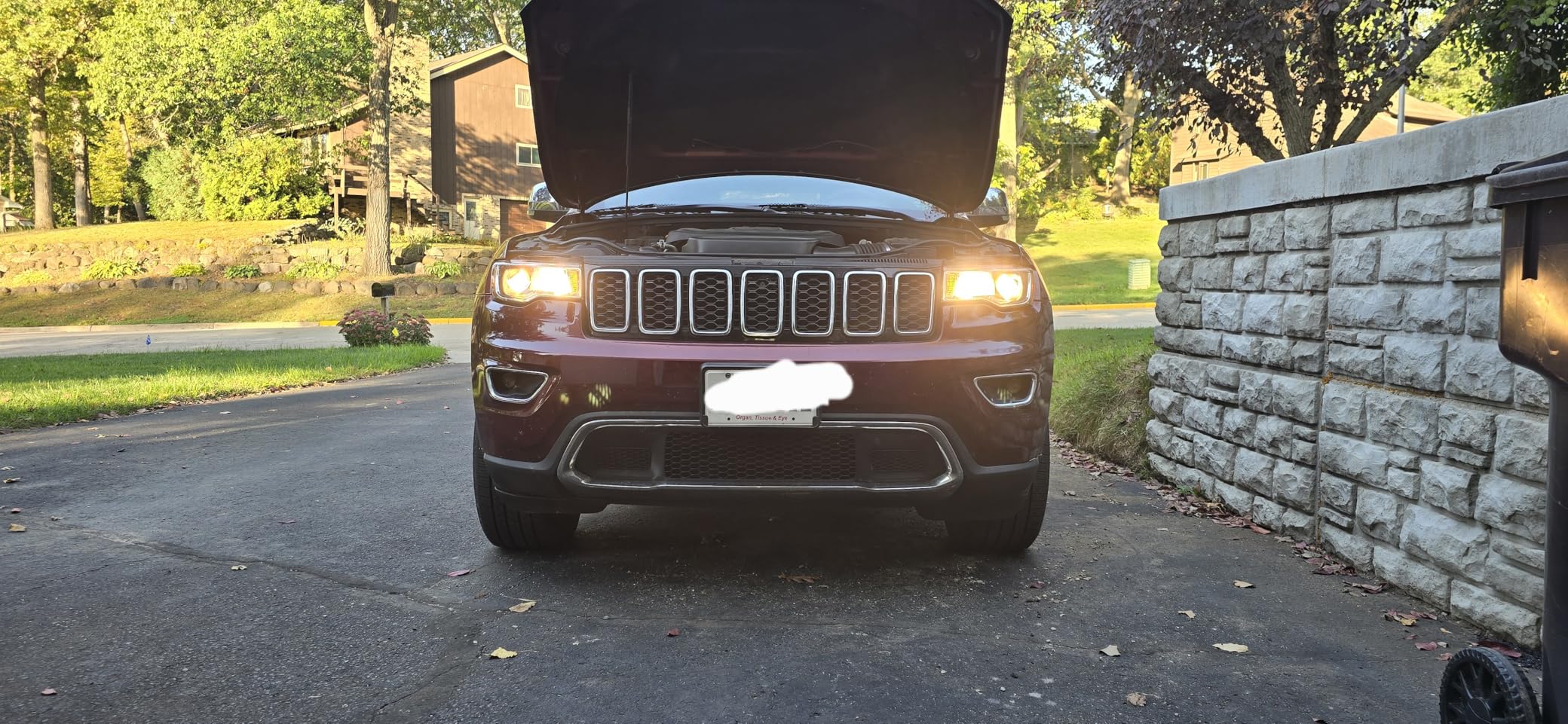The 2025 automotive lighting scene highlights remarkable advances in LED technology from Ford, Toyota, and Honda. The LEDs from Ford emit more light on the darkest of roads with 10,000 lumens of light, Toyota's approach is accurate to provide a staggering 50,000-hour life expectancy, and Honda's designs combine performance with style. Such lights illuminate much better than older halogen bulbs - they emit brighter light, last longer, and use 80% less power, ensuring safer and more efficient driving at night.
Why Are LED Headlights Becoming Standard in New Cars in 2025?
LED headlights are fast becoming the norm on new vehicles for 2025, and it is not difficult to understand why. They have numerous advantages that put them above other light sources such as halogen and xenon.
LEDs use less power and produce whiter, brighter light, hence safer driving and fuel economy. LEDs are also less frequently replaced, usually until the death of the car, compared to the halogen bulb which needs successive replacement. Xenon lights are powerful but require a lot of maintenance and replacement is extremely costly.
| Parameter | LED Headlights | Halogen Headlights | Xenon (HID) Headlights |
| Brightness | 8,000–12,000 lumens (per set) | 1,200–1,500 lumens (per bulb) | 3,000–3,500 lumens (per bulb) |
| Power Consumption | 25–35W (per bulb) | 55–65W (per bulb) | 35–42W (per bulb) |
| Lifespan | 30,000–50,000 hours | 450–1,000 hours | 2,000–2,500 hours |
| Color Temperature | 5,000K–6,500K (pure white) | 3,200K–5,000K (warm white) | 4,000K–6,000K (cool white) |
| Energy Efficiency | 80% reduction vs. halogen | Baseline | 50% reduction vs. halogen |
| Warm-Up Time | Instant (<0.1 sec) | Instant | 3–5 seconds to full brightness |
| Beam Focus | Laser-precise (±2° variance) | Diffuse pattern (±15° variance) | Moderate focus (±8° variance) |
| Glare Index | 2.4 lux | 5.1 lux | 6.8 lux |
| Replacement Cost | $220–$1,200 (full assembly) | $15–$50 (per bulb) | $80–$400 (bulb + ballast) |
| Weather Resistance | IP67 waterproof rating | IP52 splash-resistant | IP55 water-resistant |

Brand Showdown: Roadmaps of LED Technology from Three Major Automakers
As LED technology becomes a focal point in automotive lighting, Ford, Toyota, and Honda each offer unique solutions reflecting their brand philosophies. Here's a look at how these three automakers integrate LEDs across their vehicle lineups.
Ford: American Rugged Lighting Solutions
- F-Series Trucks (F-150, F-250, F-350): Ford F-Series trucks have historically been known for toughness, and their LED headlights prove that by providing robust, tough illumination suitable for work sites as well as off-road adventures. These LEDs light up in harsh conditions better and are designed to withstand heavy-duty abuse.
- Ford SUVs (Explorer, Escape, Edge): Ford's SUVs feature LED headlights that produce strong, concentrated beams of light that increase road illumination and safety, both essential for on-road travel and off-road excursion. Their functional styling balances ruggedness and current appearance in harmony with the go-anywhere ethic of these vehicles.
- Ford Sedans (Fusion, Focus): LED technology is employed by Ford in its sedans like Fusion and Focus, which blends performance and elegance. The headlights are elegant in appearance yet offer drivers excellent night-time visibility, making them perfect for everyday drives and extended road trips as well.
Toyota: Japanese Precision and Reliability
- SUV Series (RAV4, Highlander, 4Runner): Toyota's LEDs for its SUV series focus on accuracy and reliability. The RAV4, Highlander, and 4Runner feature advanced LED systems that deliver even light distribution and ultimate durability, contributing to security and reliability on different terrains.
- Sedan Series (Camry, Corolla): Toyota equips the Camry and Corolla sedans with efficient LED headlights that are known for their long life and efficiency. The headlights improve visibility immensely, aligning with Toyota's reputation for building reliable, value-priced vehicles.
- Truck Series (Tacoma, Tundra): On the Tacoma and Tundra trucks, Toyota LEDs are engineered to be strong and bright, delivering exceptional performance in even the most extreme conditions.
Honda: Balancing Performance and Design
- Popular Models (Civic, Accord, CR-V): For popular models like the Civic, Accord, and CR-V, Honda emphasizes both performance and design in LED lighting. The vehicles are blessed with sleek LED designs that enhance the appearance and offer high-quality, energy-efficient light.
- Performance Models (Type R, Si): On performance-oriented drivers, the Type R and Si models have enhanced LED systems that befit their sporty character. These headlights deliver effective, dynamic lights that achieve maximum light output as well as the sleek appearance of such vehicles.
| Category | Ford | Toyota | Honda |
| Key Vehicle Applications | F-150, F-250 (trucks); Explorer, Edge (SUVs); Fusion, Focus (sedans) | RAV4, Highlander (SUVs); Camry, Corolla (sedans); Tacoma, Tundra (trucks) | Civic, Accord, CR-V (mainstream); Type R, Si (performance) |
| Core Technology | Adaptive LED with GPS-enhanced beam alignment | LED Array Adaptive High Beam System (AHS) with 360° glare control | Multi-reflector LED with dynamic beam patterns |
| Adaptive Features | Steering-responsive beams; automatic dimming zones | Predictive illumination (anticipates curves/obstacles) | Auto-leveling; glare reduction via precision optics |
| Design Philosophy | Rugged, function-first lighting for work/off-road use | Precision engineering for urban/rural safety | Sleek aesthetics paired with performance-oriented output |
Hardcore Parameter Comparison: Which Lighting System Is the Strongest?
Each of these individual lighting characters only tells half the story. Behind all those distinctive Ford, Toyota, and Honda logos is a world of numbers and specifications that tell us what they're truly capable of. Want to see exactly how Ford's aggressive brightness compares to Toyota's precision engineering, or how Honda's performance-focused beams differ? Let's dig into the rough-and-tumble nitty-gritty of brightness, power draw, and color temperature that separates these lighting titans.
| Parameter | Ford LED Headlights | Toyota LED Headlights | Honda LED Headlights |
| Brightness |
10,000 lumens/set (5,000 lumens per bulb) |
4,000 lumens/pair (2,000 lumens per bulb) |
7,000 lumens/set (3,500 lumens per bulb) Up to 24,000LM/set (premium) |
| Power Consumption |
100W/set (50W per bulb) |
35W/pair (17.5W per bulb) |
70W/set (35W per bulb) Up to 260W/set (high-performance models) |
| Color Temperature | 6,500K (cool white, bluish hue for enhanced clarity) | 5,700K (pure white, minimal eye strain) | 6,000–6,500K (balanced daylight white) |
| Key Strengths |
- Optimized for off-road/truck use - High contrast in dark environments |
- Weather-resistant design - Uniform illumination for urban/rural roads |
- Precision beam patterns - Reduced glare for oncoming traffic |
| Energy Efficiency |
50% lower power draw vs. halogens (supports heavy-duty electrical systems) |
60% energy savings (aligns with hybrid/electric vehicle integration) |
55% efficiency gain (ideal for sport/compact models) |
| Lifespan | 25,000+ hours | 50,000+ hours | 30,000–50,000 hours |

Must-Read for U.S. Car Owners: Buying and Retrofitting Guide
Upgrading to LED headlights doesn't have to be complicated if you know what to look for. Here's a straightforward guide to help you make the best choice when buying and installing LEDs for your car.
Setting Your Budget
- Basic Models: Typically range from $30 to $150 per pair. These offer standard brightness and efficiency, suitable for most everyday driving needs.
- Mid-Range Options: Priced between $150 and $300. These often provide better performance, longer lifespan, and improved beam patterns.
- High-End Models: Can cost $300 to over $500. These models offer superior technology such as adaptive lighting and higher lumen output, potentially lasting longer and offering the best performance.
Advanced Options
- Adaptive Lighting Systems: Adaptive headlights modify the pattern of the light automatically based on the speed with which you're traveling, driving conditions, and even your turning. This ensures safety while driving by providing you with the perfect amount of illumination for different driving conditions. Adaptive systems are standardly fitted on the more expensive variants and could cost between $200 and $1,000.
- Smart LED Headlights: Some smart LED headlights are capable of connecting to your smartphone through apps. It is then simple to manage features like the light color and beam angle.
- Additional Features: Most new LED kits also come with Daytime Running Lights (DRL), which help make your vehicle more visible during the day, which is safer. Some high-end LEDs also enable you to change the color temperature, so you can switch between comfort-friendly warmer lights and clearer cooler lights, depending on what you need.
What Should You Know About Keeping LED Headlights in Top Shape?
Switching to LED headlights is a smart move, but ensuring they last and perform well requires some care and attention. Here are some practical tips on installation and maintenance to keep your LEDs shining bright for years to come.
How to Extend the Lifespan of LED Headlights
To get the most out of your LED headlights, consider these tips:
- Proper Installation: Ensure that your LEDs are correctly installed and firmly in position to prevent vibrations or misalignment, which can shorten their lifespan.
- Avoid Overuse: Although LEDs consume less energy, preventing overuse when not necessary can extend their lifespan. For instance, switch off your headlights while parked if possible.
- Use Quality Components: Spending money on quality bulbs and components can avoid premature burnout and deliver more stable performance in the long run.
How to Maintain Your LED Headlights
Regular maintenance can keep your LED headlights working effectively:
- Clean Regularly: Keep the headlight covers clear of dirt and grime for optimal light output. Remove debris with a soft cloth and a gentle cleaner.
- Check Alignment: Bumps and jolts over time can cause the headlights to get out of alignment. Periodically check and adjust them to ensure that they're properly aimed.
- Inspect Connections: Regularly check the electrical connections for corrosion or damage, which can affect performance. Clean and tighten connections as required to ensure reliable operation.

Legal & Safety Guide for LED Headlight Upgrades
Upgrading to LED headlights requires careful attention to laws and safety standards. Below are the key rules every driver should know:
Federal Requirements
Color & Brightness Limits
- Legal range: 2,500K–6,000K (white/yellow only)
- High beams ≤ 20,000 candela, low beams ≤ 7,000 candela
- Why it matters: Blue-tinted lights above 6,000K are illegal nationwide.
Retrofit Ban
- Installing LED bulbs in halogen housings violates FMVSS 108 unless the entire assembly is replaced with certified LED units.
- Tip: No aftermarket LED bulbs currently meet federal standards.
Specific Rules
Key examples drivers frequently miss:
- California: Bans lights over 6,000K; requires auto-leveling for bright LEDs
- New York: Caps brightness at 400 lumens per light (half the federal limit)
- Texas: Demands glare-reducing adaptive beams on all LED setups
Always check your state's vehicle code before upgrading.
3-Step Safety Checklist
Professional Installation
- 23% of DIY LED kits cause dangerous glare due to misalignment.
- Use SAE J599-certified shops for proper beam aiming.
Glare Testing
- Ensure lights stay below 4.5 lux at 25m.
- Test tip: Park 25 ft from a wall – the beam cutoff should sit below headlight height.
Documentation
- Keep receipts and DOT compliance certificates.
Final Tip: Stick with factory-installed LED systems when possible. For upgrades, consult your dealer about NHTSA-approved options to avoid fines and safety risks. State patrols increasingly ticket noncompliant lights – especially in CA, NY, and TX.
LED Headlights in 2025: Your Perfect Match for Ford, Toyota, and Honda
Brighter roads and safer nights await with the latest LED headlight technology. From Ford's rugged designs to Toyota's reliable systems and Honda's sleek solutions, there's a perfect match for your driving style. Stop by your local dealer to experience the difference - because sometimes the smallest changes bring the brightest improvements.
Read More
- Why LED Headlights Are the Ultimate Upgrade for Halogen Headlight Replacement – RIMTHIN
- Car Headlights Acting Up? Common Headlamp Problems and How to Fix Them – RIMTHIN
- LED Headlights: The Ultimate Guide To Brighter Night Driving – RIMTHIN
- How to Connect Fog Lights on a 2013 Chevy Malibu Without Hassle – RIMTHIN
- LED Headlights For Jeep Wrangler: Transform Your Night Driving Now – RIMTHIN




